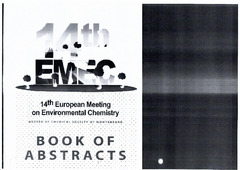| dc.description.abstract | According to the density of water resources and the diversity of physico-chemical properties of mineral waters, the territory of Serbia belongs to the one of the most resourceful areas of the European continent. Due to poor data on the quality, only a small fraction of these waters is used as drinking and bottled water. Since safe and minerally- rich drinking water is one of the preconditions of good health and one of the basic health indicators of any country, the aim of this work was to evaluate the quality of spring, ground and some river waters from South- East Serbia region. The study area included the territory between the valley of the South Morava down river flow in the West, Balkan mountain range in the East, the mountains Bukovik and Rtanj in the north, and the mountains Vrdenik and Cemernik in the south. The technique of inductively coupled plasma-atomic emission spectrometry was used for mineral characterisation of natural waters from South-East Serbia. The analysis included determination of aluminium, arsenic, calcium, cadmium, cobalt, chromium, cooper, iron, potassium, magnesium, manganese, sodium, nickel, lead and zinc in spring, ground and river waters. Calculated contents were compared with Serbian regulations on the quality of water for human use, and directive of World Health Organization for maximum acceptable concentrations of chemical substances,
Some spring and ground water samples contained high concentrations of macro-elements Ca, Mg and K. Those waters can be classified as mineral water in accordance with Serbian regulation for natural mineral water, spring water and bottled drinking water. Concentrations up to 84.2 ug/L, 8.10 pg/L and 14.9 ug/L of iron, manganese and copper, respectively, were recorded in some water samples and were within the permissible limits. Other heavy metals were not detected in analysed samples.
Based on the derived results, it can be concluded that tested ground and spring water samples have a significant potential to be used as sources for the production of bottled water. Good quality of the river water samples qualifies these alluvial deposits as good sources of water supply to many communities close to this river. Although results are promising, further investigations are necessary. In the meantime, precautionary measures should be immediately taken to protect and preserve these water resources. The preservation of water resources should be performed in economically, socially, and environmentally sustainable manner. | sr |


